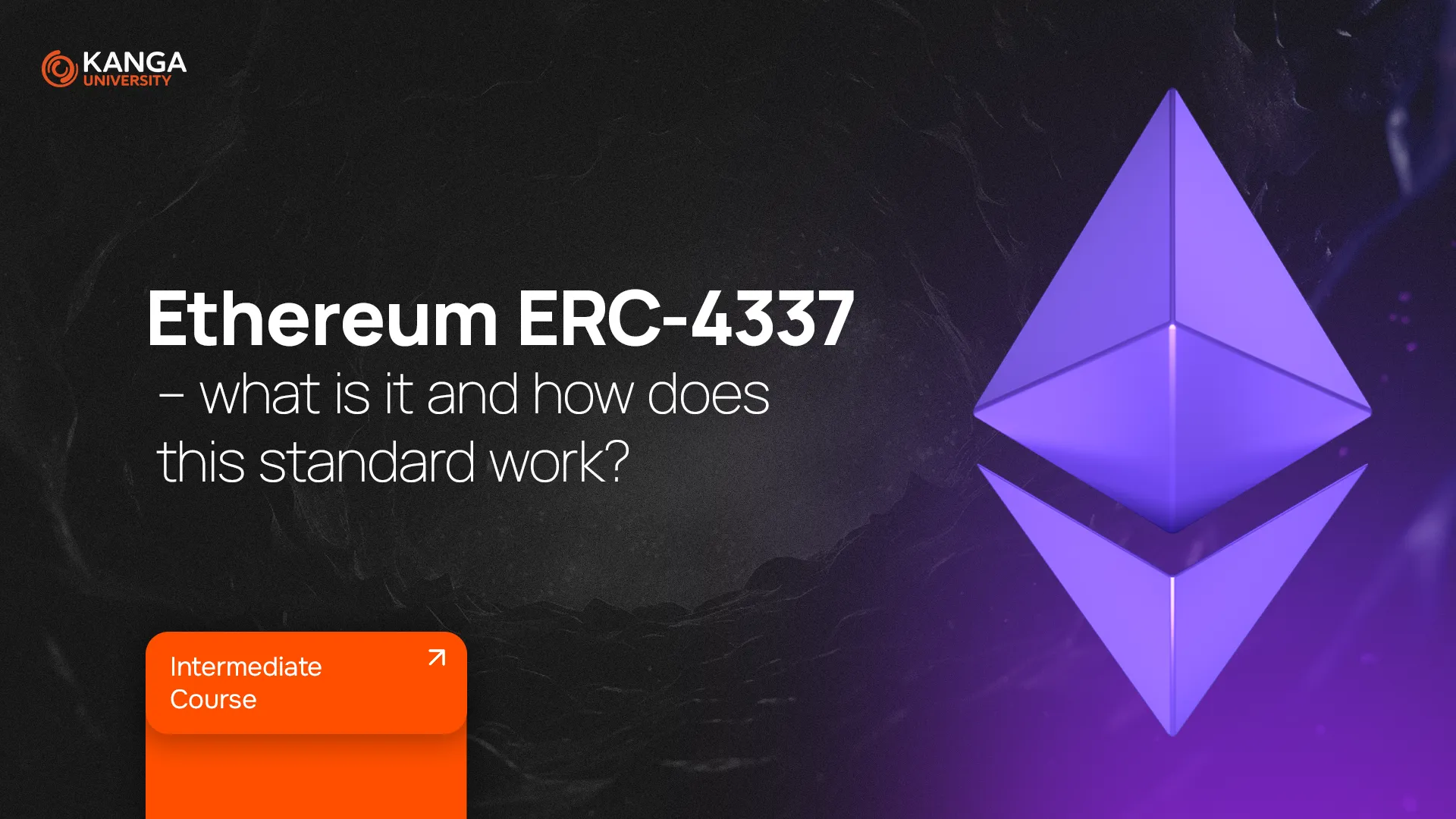
ERC-4337 has significantly changed the way users interact with the Ethereum blockchain by introducing smart wallets with enhanced configurability.
But what exactly is ERC-4337? How does it work, and what unique features does it bring? Is it truly different from traditional smart wallets? Let’s explore the world of ERC-4337 and its impact on Ethereum.
What is ERC-4337?
ERC-4337 is a “Smart Wallet” standard on the Ethereum blockchain. The concept was first introduced in 2021, but it became fully available in March 2023 during WalletCon in Colorado. This makes ERC-4337 a relatively new standard in the crypto industry.
From a technical perspective, ERC-4337 allows the creation of new Ethereum accounts capable of arbitrary verification logic. It can be implemented on any blockchain that is compatible with the Ethereum Virtual Machine (EVM).
In simpler terms, ERC-4337 enables users to execute advanced operations directly from their wallets. Unlike traditional wallets that rely entirely on a private key, ERC-4337-based wallets leverage smart contracts, making them more flexible and customizable for user transactions and fee management.
How Does ERC-4337 Work?
A smart wallet using the ERC-4337 standard introduces a unique data structure that includes specific information and enables advanced functionality within the Ethereum ecosystem.
One of its key functions is “UserOperation.” When a user initiates a transaction, it is sent to a separate mempool, where it awaits validation. Unlike the main Ethereum mempool, this separate mempool operates independently, allowing transactions to be processed differently.
On Ethereum, all transactions must be initiated and paid for using Externally Owned Accounts (EOAs). ERC-4337 bypasses this limitation by introducing an independent transaction processing system. Users can benefit from greater flexibility in how they structure and execute their transactions.
However, UserOperations still require transaction fees, which must be paid through EOAs. The key difference with ERC-4337 is that the fee does not have to be paid by the same user who initiated the transaction. This approach makes transactions more efficient, faster, and cost-effective.
What is Account Abstraction, and How Does It Relate to ERC-4337?
When discussing ERC-4337, it’s essential to understand account abstraction—a concept that enables users to manage their Ethereum accounts using smart contracts instead of traditional private keys. This allows for the creation of “smart wallets.”
Account abstraction introduces several important features that enhance user experience:
- Allows users to perform most functions directly from their wallets.
- Enables wallets to define transaction fees and choose who pays for them.
- Adds advanced security features, including multi-signature verification.
- Supports social recovery mechanisms without relying on centralized entities.
- Provides quantum-resistant cryptography, ensuring strong security even against future quantum computing threats.
ERC-4337 vs. Full Account Abstraction – Key Differences
While ERC-4337 enables many advanced functions and enhances fee flexibility, it does not provide full account abstraction.
The main challenge with ERC-4337 is that it primarily acts as a transaction relay system. It allows users to organize transactions off-chain (in an order book) before submitting the final transaction to the Ethereum blockchain.
True account abstraction, however, completely changes how EOAs interact with Ethereum, offering even greater flexibility.
Full account abstraction is still in development, but ERC-4337 is a significant first step toward this goal and represents a major innovation in the crypto space.
What Are the Key Uses of ERC-4337?
1. Enables Multi-Step Transactions in a Single Click
ERC-4337 allows users to batch multiple actions into one transaction, reducing the need for multiple confirmations. This streamlines complex operations and improves efficiency.
2. Supports Multi-Signature Transactions
Users can quickly sign transactions that require approval from multiple parties before finalization.
3. Introduces Sponsored Transactions
With ERC-4337, third parties (such as dApps or wallet providers) can cover gas fees for users, enabling a more user-friendly experience.
4. Enables Blockchain Subscriptions
Users can set up recurring payments (similar to online magazine subscriptions) without needing to manually approve each transaction.
5. Enhances Security Features
ERC-4337 allows users to set spending limits and configure custom transaction approvals, such as requiring two-factor authentication (2FA) or hardware wallet verification for large transactions.
6. Supports Wallet Recovery Mechanisms
If a user loses access to their smart wallet, ERC-4337 enables decentralized recovery options, including social recovery, which allows trusted contacts to help restore access.
How to Secure an ERC-4337 Smart Wallet
Even though smart wallets offer more functionality than traditional wallets, they still store valuable digital assets and require strong security measures.
A key recommendation is to integrate a hardware wallet with an ERC-4337 smart wallet. A hardware wallet keeps private keys offline, reducing exposure to online threats. This significantly improves security against cyberattacks.
Summary: Why Does ERC-4337 Matter?
- ERC-4337 introduces a new level of functionality for Ethereum users without changing the blockchain’s core protocol.
- Transactions using ERC-4337 are called UserOperations, offering more efficient and customizable payment options.
- ERC-4337 allows users to pay gas fees using ERC-20 tokens, making transactions more flexible.
- This standard is supported on Ethereum-compatible networks, including Polygon, Avalanche, and Arbitrum.
- Automated transaction approvals eliminate the need for manual confirmations in many cases, improving ease of use.
- ERC-4337 makes smart accounts more user-friendly, especially for beginners entering the crypto space.
- It supports biometric authentication, such as fingerprint or facial recognition, for signing transactions, enhancing security and convenience.
ERC-4337 marks a significant milestone in Ethereum’s evolution, providing a more user-friendly and efficient way to interact with the blockchain while paving the way for future advancements in account abstraction.